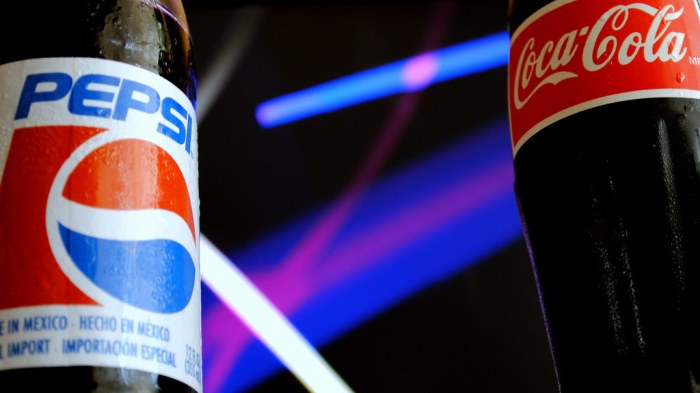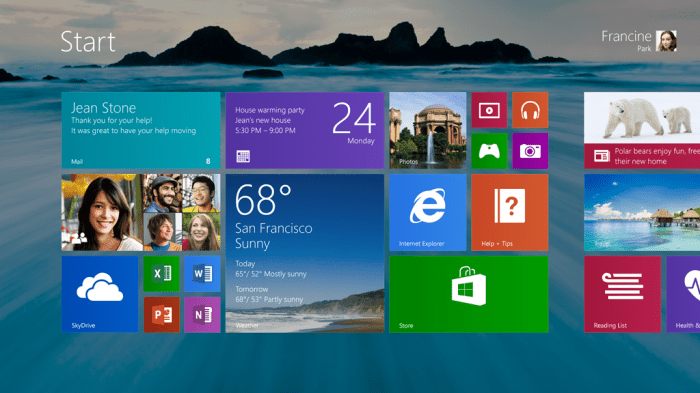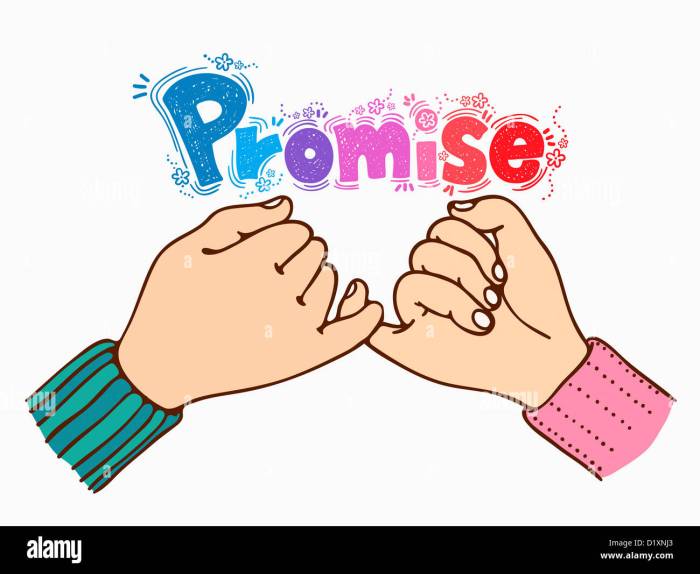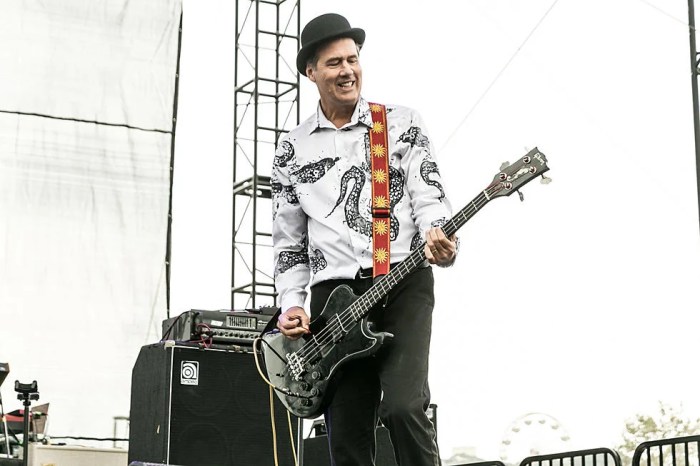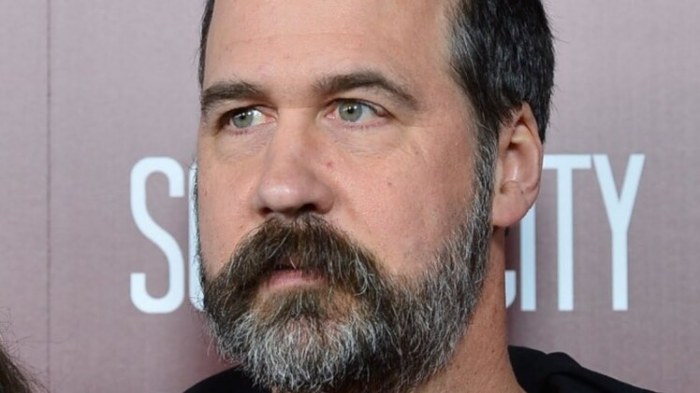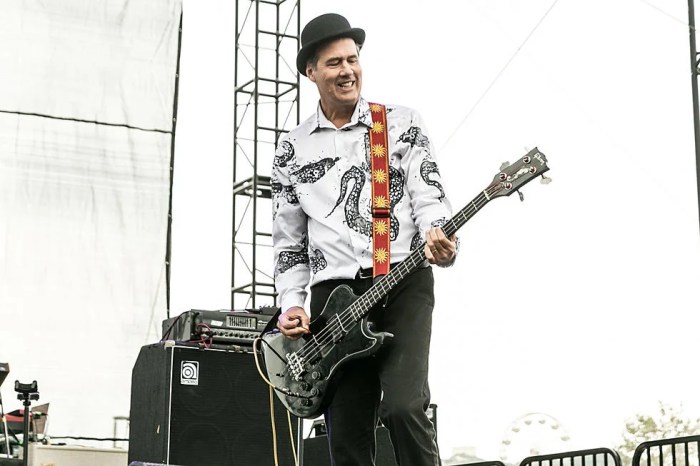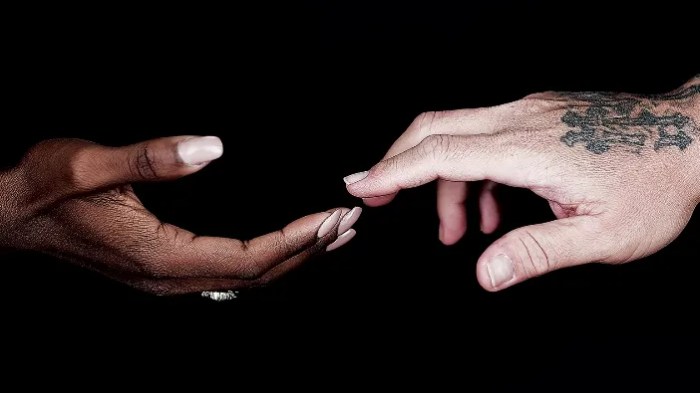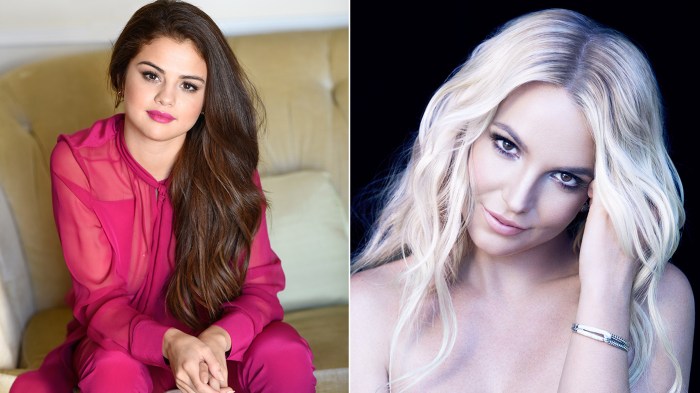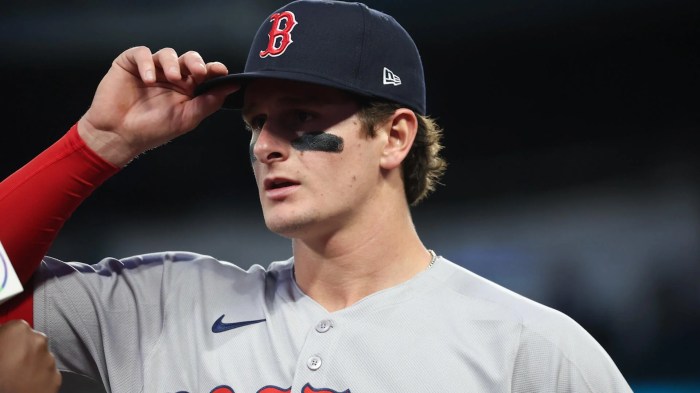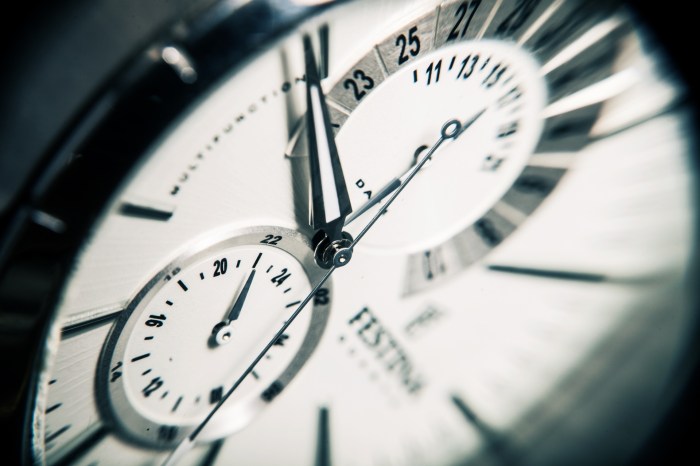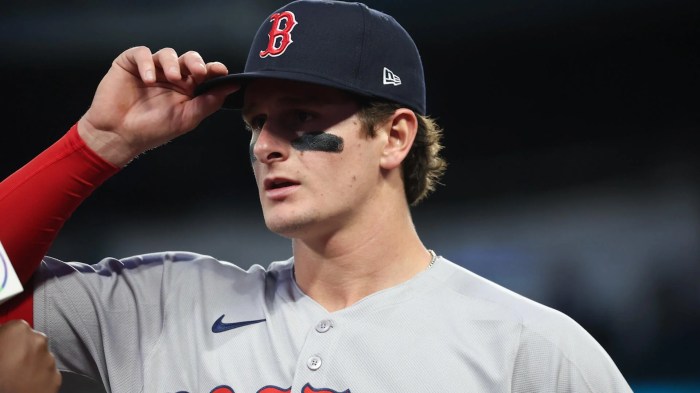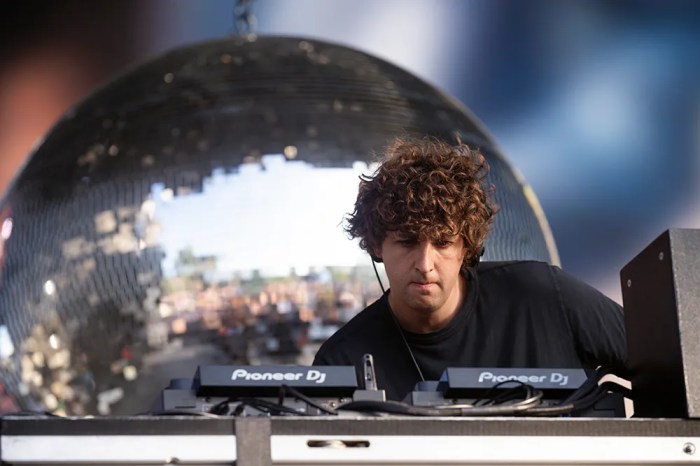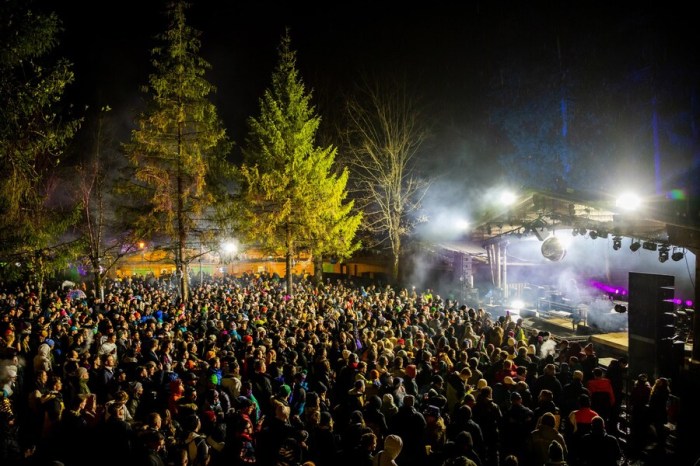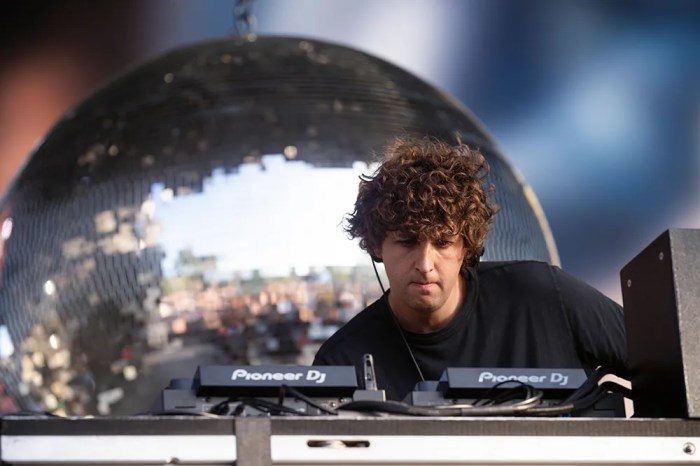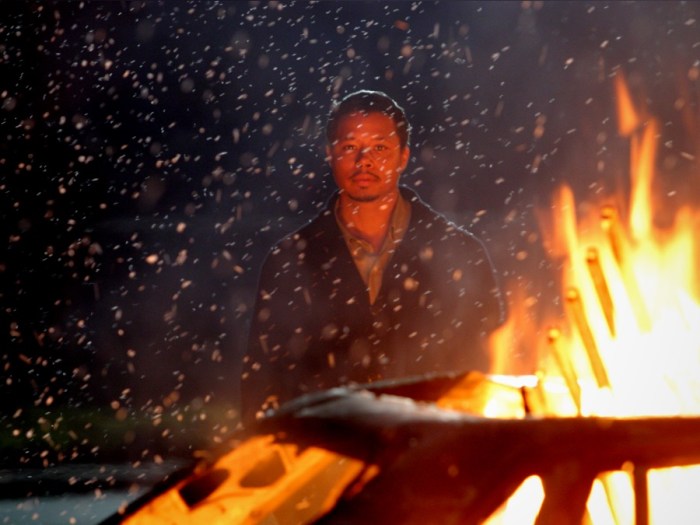How Pepsi used pop music to build an empire is a fascinating story of shrewd marketing and cultural savvy. From the early days of partnering with iconic musicians to the digital age, Pepsi’s relationship with popular music has been a cornerstone of its success. This exploration delves into the evolution of Pepsi’s musical partnerships, analyzing how they reflected shifting trends, targeted specific demographics, and ultimately shaped the Pepsi brand image.
This journey through Pepsi’s music history will uncover the strategies behind their successful campaigns, highlighting the impact of music videos, and examining the case studies of campaigns that either soared or stumbled. We’ll explore how Pepsi adapted its approach to the digital age, leveraging social media and streaming platforms to maintain its musical relevance. Ultimately, we’ll understand how music became a powerful tool in building a global brand recognized for its cultural connection.
Early Pepsi and Music Partnerships
Pepsi’s rise to global dominance wasn’t solely about the fizzy drink itself. A crucial element in its success story has been its strategic alliances with popular music, fostering a powerful association between the brand and youthful energy. From the very beginning, Pepsi recognized the potential of music to connect with its target demographic and build brand loyalty.Pepsi’s early music partnerships weren’t just about sponsoring concerts; they were calculated efforts to align the brand with specific musical trends and personalities, reflecting a clear understanding of the evolving tastes of the younger generation.
This allowed Pepsi to create a strong emotional connection with consumers, going beyond simple advertising.
Pepsi’s Early Sponsorships
Pepsi’s initial involvement with music often revolved around supporting emerging artists and musical styles. Early partnerships were not necessarily with massive stars, but rather with those whose music resonated with the youthful energy that Pepsi sought to embody. This allowed the brand to position itself as a symbol of innovation and progressive culture.
Types of Musical Acts Sponsored
Pepsi, in its early days, supported a diverse range of musical acts, from emerging rock and roll bands to those representing the burgeoning rhythm and blues scene. This strategic approach aimed to tap into different musical trends, ensuring a broad appeal across various demographics. They recognized the power of music to connect with the zeitgeist. Early sponsorships provided a vital platform for up-and-coming musicians, a strategy that ultimately strengthened Pepsi’s association with cultural relevance.
Marketing Campaigns Linking Pepsi to Music
Early Pepsi marketing campaigns creatively intertwined the brand with musical events and artists. These campaigns weren’t just about displaying Pepsi logos; they were carefully crafted narratives that showcased the energy and excitement of music. This approach helped position Pepsi as a key part of the cultural landscape, rather than just a beverage.
- One notable campaign involved linking Pepsi to a specific musical festival, creating a buzz and association between the drink and the atmosphere of live music. This tactic created an exciting environment where the Pepsi brand was intrinsically connected to a cultural experience.
- Another strategy involved creating branded music-themed merchandise. These items, like T-shirts and posters, reinforced the association between Pepsi and the artists being supported. This tactic helped spread the brand’s message through a more tactile and engaging medium.
Strategies to Connect Pepsi with Popular Music Trends
Pepsi employed a variety of strategies to maintain relevance with evolving musical tastes. These involved actively monitoring and responding to shifts in musical trends, allowing the brand to remain connected to the current cultural pulse. This adaptability was crucial to the longevity of their music partnerships.
- Pepsi carefully tracked emerging musical genres and artists, ensuring their sponsorships reflected the most popular and influential voices of the time. This allowed Pepsi to appear as forward-thinking and culturally attuned.
- They sought to partner with artists whose image and style resonated with the brand’s desired image of youth and energy. This careful selection of artists was vital in ensuring the alignment of brand values with the artistic expression of the musical acts.
Key Figures Involved in Shaping Pepsi’s Musical Partnerships
While specific names and roles are difficult to pinpoint in the early years, several key figures undoubtedly played significant roles in the strategic decision-making surrounding Pepsi’s music partnerships. These individuals understood the power of music to drive brand recognition and create a lasting connection with consumers. The success of these partnerships was a result of careful collaboration between marketing professionals and music industry representatives.
Pepsi and the Evolution of Pop Music
Pepsi’s relationship with pop music isn’t just a marketing strategy; it’s a reflection of the ever-shifting cultural landscape. From the early days of rock and roll, to the rise of hip-hop, Pepsi has consistently adapted its musical partnerships to resonate with the zeitgeist, demonstrating a keen understanding of how music connects with consumers. This evolution reveals a dynamic interplay between brand image, musical trends, and cultural shifts.Pepsi’s approach to music has mirrored the changing styles of popular music, consistently striving to align its brand image with the dominant cultural sounds.
This adaptability is a key factor in Pepsi’s enduring success in the beverage industry. It’s not just about selling soda; it’s about selling a lifestyle that resonates with the music fans of the time.
Pepsi’s savvy use of popular music to connect with youth and build a global brand is fascinating. It’s like a marketing masterclass. However, similarly, determining the age of a horse through visual cues, as detailed in Tell the Age of a Horse , also requires a keen eye for subtle details. This attention to the nuances of identifying traits, be it in the musical landscape or the physical form of a horse, highlights how understanding cultural signals can unlock hidden insights.
Pepsi’s empire-building strategy is a prime example of that.
Pepsi’s Adaptation to Shifting Musical Tastes
Pepsi’s musical partnerships have mirrored the evolving tastes of the decades. From the early days of rock and roll, where they targeted a young, rebellious audience, to the rise of hip-hop and the subsequent influence of music videos, Pepsi has remained attuned to cultural shifts. Their marketing campaigns successfully incorporated the most relevant music of each era, effectively creating a strong association between their brand and popular music.
Comparing Pepsi’s Music Choices Across Decades
The musical choices Pepsi has made across different decades offer a fascinating insight into cultural trends. In the 1960s, the brand associated itself with rock and roll artists, tapping into the rebellious energy of the time. The 1980s saw a shift towards pop music, with artists embodying the optimism and glamour of the era. The 1990s and 2000s witnessed a more diverse range of musical styles, from hip-hop to R&B, reflecting the growing multiculturalism of the time.
The Influence of Cultural Trends on Pepsi’s Music Selection
Cultural trends played a significant role in shaping Pepsi’s music selections. The rise of youth culture in the 1960s, with its associated musical genres, provided an ideal platform for Pepsi to connect with a younger demographic. Similarly, the emergence of hip-hop culture in the 1980s and 90s allowed Pepsi to target a new generation of music lovers, showcasing a willingness to embrace cultural shifts.
The Impact of Music Videos on Pepsi’s Marketing Strategy
Music videos significantly impacted Pepsi’s marketing strategy, acting as powerful visual advertisements. The visual nature of music videos allowed Pepsi to create engaging and memorable campaigns, conveying a particular message and associating the brand with a specific style. These videos often featured popular artists performing in visually striking settings, creating a strong association between Pepsi and the music of the time.
For example, Pepsi commercials frequently featured popular artists and bands from the time, showcasing the product in dynamic and aesthetically pleasing ways. This strategy not only increased brand visibility but also fostered a stronger connection with the target audience.
Music as a Branding Tool
Pepsi’s enduring success isn’t just about the taste of the soda; it’s deeply intertwined with its savvy use of music as a powerful branding tool. By strategically partnering with artists and crafting campaigns around specific musical genres and themes, Pepsi has consistently cultivated a distinct brand identity, resonating with different demographics and reinforcing its image as a youthful, vibrant, and aspirational beverage.
This approach allowed Pepsi to not only sell a product but also to sell an experience, one that was intrinsically linked to the music of its time.Pepsi’s use of music transcends mere advertising; it becomes a critical component of its overall brand strategy. Music acts as a sonic shorthand, evoking emotions and associations that directly connect with the target audience.
The choice of artists, the style of music, and the overall campaign theme all contribute to the perception of Pepsi as a brand. This meticulous approach helped Pepsi maintain its relevance and appeal across different generations.
Pepsi’s Key Musical Campaigns
Pepsi has a long history of partnering with prominent musicians to promote their products. These collaborations have not been random; they’ve been carefully curated to align with Pepsi’s brand image and the prevailing musical trends of the time.
| Year | Artist(s) | Campaign Theme |
|---|---|---|
| 1970s | Various artists, including pop and rock acts | “Pepsi Generation” – capturing a youthful, rebellious spirit. Often featured live performances and concerts. |
| 1980s | Michael Jackson, Madonna, Prince | Highlighting the music icons of the era and aligning with their respective fan bases. |
| 1990s | Various artists, including hip-hop and R&B artists | Emphasizing diversity and multicultural appeal, showcasing the dynamism of the time’s popular music. |
| 2000s | Various artists, including pop and hip-hop acts | Staying relevant with contemporary music and leveraging the influence of popular music stars. |
| 2010s-present | Various artists, including pop, hip-hop, and electronic music artists | Maintaining a diverse approach to music, reflecting the current global musical landscape. Emphasis on global reach and social media engagement. |
Creating a Distinct Brand Identity Through Music
Music is a powerful tool for building a unique brand identity. Pepsi strategically chose artists and musical styles that resonated with their target audience, associating their brand with specific moods and emotions. This approach helped cultivate a sense of belonging and aspiration.
“Music is an emotional language, and Pepsi has effectively used it to connect with its target audience on an emotional level.”
For example, featuring pop icons during the 1980s and 1990s helped project Pepsi as a brand that embraced youth culture and cutting-edge trends.
Positioning Pepsi Through Musical Choices
Pepsi’s musical choices were carefully designed to appeal to a specific demographic. In the 1970s, the “Pepsi Generation” campaign tapped into a desire for youth rebellion and freedom, while in later decades, the brand’s focus shifted to reflect the diverse musical tastes of different generations and cultures. This adaptability ensured Pepsi’s continued relevance and appeal across different demographics.
Comparing Pepsi’s Musical Choices to Competitors
Comparing Pepsi’s musical choices to its competitors reveals a pattern of adaptation and innovation. While competitors might have focused on specific genres or demographics, Pepsi often demonstrated a more flexible approach, embracing various musical trends and artists. This agility allowed Pepsi to stay ahead of the curve and connect with a wider range of consumers.
The Role of Music Videos in Pepsi’s Success: How Pepsi Used Pop Music To Build An Empire
Pepsi’s association with music extends far beyond simple product placement. Music videos became a powerful tool in crafting a brand image and connecting with a younger demographic. The company recognized the potent influence of music on cultural trends and used it strategically to build a lasting relationship with its target audience. This involved more than just featuring their product; they became active participants in the music scene, creating videos that were not only advertisements but also artistic statements.The use of music videos was not simply a marketing tactic; it was a calculated investment in shaping a brand identity.
By associating their product with popular music and visuals, Pepsi created a powerful synergy that resonated deeply with the cultural landscape of the time. This synergy transcended mere commercialism, creating a sense of shared experience and aspiration.
Pepsi’s Iconic Music Videos
Pepsi’s association with music videos wasn’t just about fleeting trends. They meticulously crafted visuals and musical choices to create a lasting impact on viewers. This approach resulted in a collection of iconic music videos that became synonymous with the brand. These videos often showcased the product in an artistic context, aligning the drink with the aesthetic and energy of the music.
- Michael Jackson’s “Billie Jean” (1983): This iconic music video, featuring a futuristic aesthetic and elaborate choreography, showcases Pepsi’s early commitment to associating with top-tier artists. The video’s visual grandeur perfectly complemented the song’s powerful message, reflecting a blend of contemporary style and timeless appeal. The scene where Jackson sips Pepsi during the music video highlighted the product’s association with contemporary youth culture.
- Madonna’s “Like a Virgin” (1984): This video, marked by its bold and innovative visual style, showcased Pepsi’s ability to embrace cutting-edge music and visuals. The video’s rebellious energy and Madonna’s iconic performance perfectly aligned with Pepsi’s aim to appeal to a generation eager for change and self-expression. The inclusion of Pepsi products in the video further reinforced the association between the product and contemporary culture.
- Various Pepsi commercials with artists of the 1990s and 2000s: These videos, featuring artists like Janet Jackson, TLC, and many more, often used a vibrant, colourful aesthetic, incorporating music trends of the time into their visuals. The videos utilized catchy melodies and energetic performances to keep the brand current and associated with pop culture.
Significance of Music Videos in Reaching a Wider Audience
Music videos provided a powerful platform for Pepsi to reach a wider audience, particularly young people. These videos transcended traditional advertising, becoming cultural touchstones. They offered a compelling visual narrative that went beyond simple product placement, engaging viewers on an emotional and aesthetic level.
- Expanding Brand Awareness: Music videos exposed Pepsi to a broader audience than traditional advertising methods. This reach was further amplified by the popularity of the music videos themselves, creating a ripple effect in media coverage and public perception.
- Cultural Relevance: The music videos became an integral part of the cultural zeitgeist. By associating with popular artists and music trends, Pepsi positioned itself as a symbol of contemporary culture and youth identity.
- Memorability: The visual spectacle and catchy music in the videos helped solidify Pepsi’s brand image in the minds of consumers. The videos’ memorability was further enhanced by their artistic quality and the iconic status of the artists involved.
Visual Styles in Pepsi Music Videos
Pepsi’s approach to visual style in its music videos evolved over time, reflecting the changing trends in music and popular culture.
| Decade | Visual Style | Examples |
|---|---|---|
| 1980s | Futuristic, High-Energy, Elaborate Choreography | Michael Jackson’s “Billie Jean,” Madonna’s “Like a Virgin” |
| 1990s | Vibrant, Colourful, Energetic, Often featuring dance routines | TLC, Janet Jackson, and many other artists |
| 2000s-Present | Modern, Contemporary, High Production Value, Often Incorporating Technology and Special Effects | More recent collaborations and campaigns |
Pepsi and Music in the Digital Age
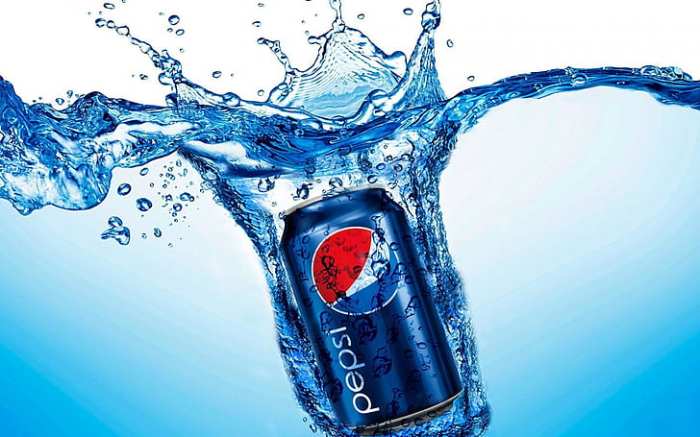
Pepsi’s enduring relationship with music has evolved dramatically in the digital age. No longer confined to television commercials and radio jingles, Pepsi now navigates a complex landscape of social media, streaming platforms, and online fan communities. This evolution reflects a shift in consumer engagement and requires Pepsi to adapt its music marketing strategies to remain relevant and impactful.Pepsi’s approach to music has adapted to the digital age by leveraging the unique opportunities offered by social media and streaming platforms.
The company now directly engages with music fans in real-time, fostering a sense of community and interaction. This engagement extends beyond traditional advertising, allowing for dynamic, personalized experiences.
Social Media Platforms and Streaming Services
Pepsi’s music partnerships are profoundly impacted by social media platforms and streaming services. These platforms provide unprecedented opportunities for real-time engagement with fans. Fans can interact directly with artists featured in Pepsi campaigns, amplifying the brand’s message and driving awareness organically. Streaming services, meanwhile, provide tailored listening experiences, allowing Pepsi to target specific demographics with relevant musical content. This targeted approach is a crucial element of their digital strategy.
Pepsi’s Online Engagement Strategies
Pepsi employs various strategies to engage with music fans online. These strategies include creating interactive content, hosting contests, and fostering discussions around music collaborations. For instance, they might use Instagram Stories to give behind-the-scenes glimpses into artist collaborations, or create polls on Twitter to gauge fan preferences. These interactive tactics create a sense of community and ownership around the brand.
Furthermore, Pepsi frequently uses influencer marketing to reach specific audiences, leveraging the trust and credibility influencers have with their followers.
Comparison to Previous Eras
Pepsi’s music marketing strategies in the digital age differ significantly from those in previous eras. In the past, Pepsi relied heavily on television commercials and radio advertisements. While these platforms still have their place, the digital age has enabled a more direct and interactive engagement with fans. This shift reflects a broader trend of companies needing to adapt their marketing strategies to the changing ways consumers engage with brands and content.
For example, campaigns now often feature artist-driven content on TikTok, rather than relying solely on celebrity endorsements in television ads.
Leveraging Social Media for Music Collaborations
Pepsi leverages social media to promote music collaborations in a multitude of ways. The company often creates dedicated hashtags for campaigns, encouraging fan participation and driving conversations online. These hashtags become rallying points for fans, facilitating discussions and sharing of experiences related to the collaboration. Furthermore, Pepsi utilizes user-generated content, showcasing fan-created videos and posts related to the music collaborations, amplifying the reach and impact of the campaign.
Pepsi’s masterful use of catchy pop tunes to boost their brand is legendary. Their campaigns often featured iconic artists, effectively weaving music into their marketing strategy. The latest sounds in the music scene are just as important as they were decades ago, which can be heard in the new track, chino amobi hard stacatto ft embaci , a great example of how artists are connecting with audiences.
Ultimately, it all points back to the same tried-and-true strategy that Pepsi used to build a global empire—linking their brand to the music people love.
This strategy effectively leverages social media’s potential to create a viral buzz.
Case Studies of Successful Pepsi Music Campaigns
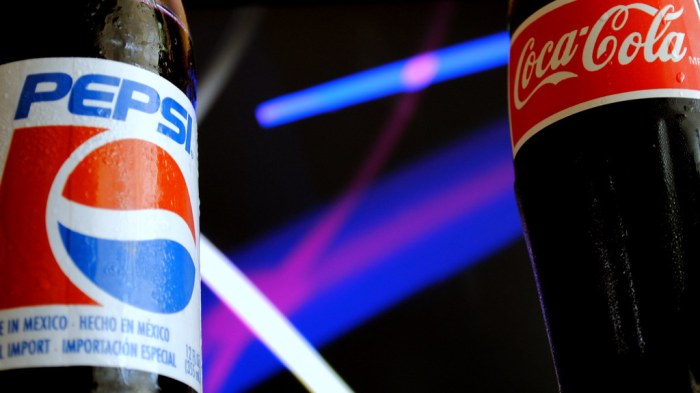
Pepsi’s enduring relationship with pop music is more than just a marketing tactic; it’s a reflection of the brand’s evolution alongside popular culture. This symbiotic partnership has yielded some truly iconic campaigns, showcasing how music can effectively connect with consumers and solidify a brand’s image. From pioneering the use of music videos to embracing modern digital platforms, Pepsi’s strategies have consistently demonstrated a keen understanding of how to leverage musical trends for maximum impact.Analyzing successful and less successful campaigns provides invaluable insights into what works and what doesn’t in the ever-evolving landscape of music and marketing.
This allows us to understand the crucial elements that contribute to the effectiveness of a campaign and the pitfalls that can lead to failure. The following case studies explore specific campaigns, dissecting the musical choices and marketing strategies behind their outcomes.
A Case Study: The 2000s “Pepsi Generation” Campaign
This campaign, deeply intertwined with the pop culture of the early 2000s, showcased a remarkable ability to connect with a target audience. The campaign leveraged a collection of popular artists, including bands and solo acts, which resonated deeply with the youth of the era. The specific musical choices were carefully selected to represent the energy and optimism associated with the “Pepsi Generation.” The campaign aimed to capture the spirit of youth culture, positioning Pepsi as the drink of choice for a generation defined by its musical tastes.
- The campaign used a mix of popular pop artists, creating a sense of inclusivity and capturing the diverse musical tastes of the target audience.
- The campaign’s marketing strategy included television commercials, music videos, and promotional tie-ins with music events. This multi-faceted approach ensured widespread exposure and amplified the campaign’s message.
- The campaign’s success is largely attributed to its ability to align with the prevailing cultural mood and artistic trends.
The campaign’s goal was to reinforce Pepsi’s position as a youthful and aspirational brand. This goal was overwhelmingly achieved.
A Case Study: A Less Successful Campaign (Example)
While the “Pepsi Generation” campaign was undeniably successful, not all Pepsi music campaigns have achieved the same level of resonance. Analyzing campaigns that didn’t meet expectations provides insights into potential pitfalls. One example might be a campaign focusing on an obscure musical genre that didn’t align with the prevailing cultural trends or appeal to the target audience. A lack of strategic alignment between the music and the brand’s core values could also be a factor in underperforming campaigns.
- One example of a less successful campaign might have been a Pepsi campaign focusing on a niche, less popular musical genre that failed to resonate with the target audience.
- The campaign’s musical choices might not have been strategically aligned with the brand’s core values or the overall cultural climate.
- Poor marketing execution, limited reach, or a lack of creative differentiation from other campaigns could also contribute to less successful results.
Ultimately, the campaign’s failure to achieve its goals might have stemmed from misjudging the cultural climate or the target audience’s preferences.
Pepsi’s masterful use of pop music to build its brand empire is fascinating. It’s a testament to the power of associating a product with catchy tunes and iconic imagery. Luckily, if you’re looking to hone your own songwriting skills, Phil Elverum’s announced an online songwriting workshop, a great opportunity to learn from a master of the craft phil elverum announces online songwriting workshop.
This kind of dedication to crafting memorable sounds is exactly what makes companies like Pepsi so successful. It’s not just about the product, it’s about the experience they create.
Illustrative Examples of Pepsi’s Musical Partnerships
Pepsi’s enduring relationship with music transcends simple endorsements; it’s a strategic partnership deeply intertwined with the evolution of popular culture. The brand has consistently sought to align itself with iconic artists and musical trends, effectively leveraging music to bolster its brand image and resonate with target demographics. This section delves into specific examples, showcasing the nuances of these collaborations and their impact.
The 1990s Pepsi-Rock Collaboration: A Case Study
Pepsi’s 1990s association with rock music was a pivotal period in the brand’s history. The era witnessed a shift in popular music towards alternative and grunge sounds. Pepsi capitalized on this by partnering with artists who embodied this evolving musical landscape. This strategic move allowed Pepsi to appeal to a younger, more rebellious demographic while reinforcing its image as a forward-thinking and innovative brand.
A Deep Dive into a Notable Partnership
One particularly significant partnership involved the use of iconic grunge rock artist, Nirvana. This collaboration was particularly notable for the bold artistic direction of the music video, which mirrored the band’s rebellious and alternative aesthetic. The music video showcased a stark contrast to Pepsi’s previous campaigns, which had often leaned towards more mainstream pop styles. This daring approach allowed Pepsi to attract a younger audience who were more likely to identify with the band’s image.
The band’s music, and the visuals, helped to position Pepsi as a brand that embraced new artistic expression. This partnership demonstrated a clear understanding of how music could be a powerful tool to attract and engage with the youth demographic.
Impact on the Artist’s Career
The Nirvana partnership undoubtedly boosted the band’s visibility and exposure. The music video generated significant media attention, propelling the band’s profile to new heights. This visibility resulted in increased album sales and concert attendance. Moreover, the association with a large-scale brand like Pepsi contributed to the band’s broader cultural impact, cementing their place as an influential force in music and beyond.
Comparing Pepsi’s Musical Collaborations
The following table compares several key Pepsi musical collaborations, highlighting their musical styles, artists, and the alignment with Pepsi’s brand image:
| Collaboration | Musical Style | Artists | Brand Image Alignment |
|---|---|---|---|
| 1990s Grunge Rock | Alternative/Grunge | Nirvana, Pearl Jam | Rebellious, cutting-edge |
| 1980s Pop | Pop | Michael Jackson | Sophisticated, glamorous |
| 2000s Hip-Hop | Hip-Hop | Various | Urban, trendsetting |
| Modern Pop | Pop | Various | Youthful, trendy |
Alignment with Pepsi’s Brand Image
Pepsi’s musical collaborations were meticulously designed to reflect and reinforce the brand’s image. For instance, by partnering with Nirvana, Pepsi conveyed a rebellious, edgy image, distinct from its earlier campaigns. Each partnership was carefully chosen to align with the brand’s current target audience and the prevailing musical trends. This consistent approach showcased Pepsi’s adaptability and its commitment to staying relevant within the ever-changing cultural landscape.
Impact of Music on Pepsi’s Brand Perception
Pepsi’s relationship with music transcends a simple marketing tactic; it’s woven into the very fabric of the brand’s identity. From the iconic jingles of yesteryear to the contemporary collaborations of today, music has consistently shaped Pepsi’s public image and emotional connection with consumers. This influence extends far beyond mere product promotion, impacting how consumers perceive Pepsi’s values, lifestyle, and overall personality.The use of music by Pepsi isn’t merely about creating catchy tunes; it’s about crafting an experience that resonates with a target audience.
This approach has fostered a sense of community and shared identity, transforming the brand from a beverage company to a cultural force. Music has been instrumental in defining Pepsi’s place in the global landscape, shaping its brand perception and, ultimately, its success.
How Music Shapes Pepsi’s Brand Image, How pepsi used pop music to build an empire
Pepsi’s association with pop music has consistently positioned the brand as youthful, energetic, and trendy. The choice of artists and the style of music often reflect current pop culture trends, effectively creating a sense of belonging and relevance among younger demographics. This strategy keeps Pepsi firmly entrenched in the forefront of contemporary cultural conversations. Moreover, the brand’s history of showcasing a wide range of artists, from diverse musical genres, reinforces its inclusive and multifaceted image, appealing to a broad spectrum of consumers.
Emotional Connection Through Music
Music evokes powerful emotions. Pepsi leverages this by associating its products with feelings of happiness, excitement, and togetherness. The music in Pepsi commercials and campaigns often features upbeat tempos, catchy melodies, and positive lyrical themes. This deliberate choice creates a strong emotional connection with viewers, making them associate Pepsi not just with thirst quenching, but with a positive and enjoyable experience.
For example, a catchy jingle, or a high-energy music video, can quickly evoke a specific emotion, and that association is a powerful tool in building a brand’s identity.
Music in Creating a Positive Brand Experience
Pepsi’s use of music in advertisements, social media campaigns, and events contributes to a positive and memorable brand experience. Music helps to create a cohesive and consistent brand narrative across various platforms. This unified approach enhances the brand’s visibility and memorability. The consistent use of music across different mediums strengthens the brand’s image and reinforces its identity in the consumer’s mind.
Comparison with Other Beverage Brands
Compared to other beverage brands, Pepsi stands out for its consistent and often bold use of music. While other brands might use music as a background element, Pepsi often integrates it as a central component of its marketing campaigns. This proactive approach creates a more engaging and memorable experience for the consumer. This difference is notable and creates a distinctive impact.
Influence on Pepsi’s Target Audience
Pepsi’s music choices often align with the preferences of its target audience, particularly young adults and millennials. By partnering with popular artists and adopting trending music styles, Pepsi effectively resonates with the values and interests of its core demographic. This targeted approach not only enhances brand awareness but also drives sales and fosters a loyal customer base. The music choices help Pepsi stay relevant to its core target market, while appealing to other audiences, as well.
Final Summary
In conclusion, Pepsi’s history with pop music is a testament to the power of cultural relevance. Their strategic partnerships, evolving with the times, have cemented their place as a brand deeply intertwined with popular music. The evolution of music videos, social media, and shifting cultural trends all played a role in Pepsi’s enduring success. This exploration highlights how music, when effectively leveraged, can become an integral part of building a powerful and enduring brand.
